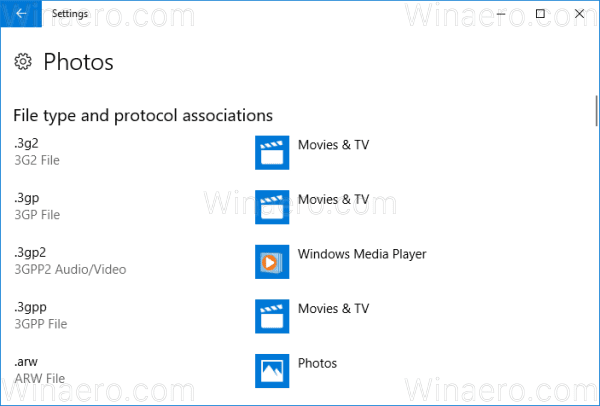

- #Windows 10 defaults how to#
- #Windows 10 defaults pdf#
- #Windows 10 defaults full#
- #Windows 10 defaults windows 10#
- #Windows 10 defaults Offline#
In my example below, I removed everything that is not associated with Adobe Reader DC, so we end up with the following XML file: The answer is, yes, you can import just the association you need. People often ask me if it is possible to deploy just one file association or if they must use the entire file, which also contains all the default settings. XML file with all the file associations from that user. html files, so it was reset to Microsoft Edge.Īccordingly, in Windows 10/11 and Windows Server 2022/2019/2016 you won’t be able to configure file associations through the registry, as it worked in Windows 7 and Windows Server 2008R2.Now you have a. In this case, Windows will automatically reset the file association settings to the default state and the user will see a notification: An app default was reset.Īn app caused a problem with the default app setting for. If you try to manually change the ProgId registry value and assign another program, the Hash value will no longer be valid. This security mechanism is needed to protect users from malware that can change file associations without the user’s approval. The presence of this hash ensures that the user or administrator (via the GPO) has configured this file mapping.
#Windows 10 defaults pdf#
This registry key contains the association settings for the PDF file extension. Run the Registry Editor (regedit.exe) and go to the registry key HKEY_CURRENT_USER\Software\Microsoft\Windows\CurrentVersion\ Explorer\FileExts\.pdf\UserChoice. Now let’s see how it looks in the Windows registry. pdf file type with an Acrobat Reader through an XML file and Group Policy.
#Windows 10 defaults how to#
In the previous section, we showed you how to configure the association for the.
#Windows 10 defaults windows 10#
Changing File Association via the Windows RegistryĪs we said above, in Windows 10 /11the way to set file association options has changed. However, the next time the Group Policy settings are updated at the next logon, the user’s file associations will be overwritten with the settings from the XML file. When working in Windows, a user can reassign these file associations.
#Windows 10 defaults Offline#
The current file association settings in an offline Windows image can be obtained using this command:ĭism.exe /Image:C:\mnt\offline /Get-DefaultAppAssociations Configure Default File Associations with Group Policy The resulting XML file can be imported into a Windows on other computers using the DISM tool:ĭism.exe /Online /Import-DefaultAppAssociations:C:\PS\DefaultAssoc.xml

For example, we’ll leave the following lines for PDF and FDF extensions: Leave only the lines with the file extensions you need. If you need to use only a part of associations from this list (in order not to override the existing user associations), you can manually edit the XML file.
#Windows 10 defaults full#
You can open the DefaultAssoc.xml file with any text editor, and see the full list of file associations exported. The command exports to an XML file all of your configured program associations. XML file using DISM:ĭism.exe /online /Export-DefaultAppAssociations:C:\PS\DefaultAssoc.xml The current file association settings for programs configured under the current user can be exported to an. This is possible for apps registered in the registry key HKEY_CLASSES_ROOT\Applications.Įxport and Import Default App Associations on Windows to the XML file


 0 kommentar(er)
0 kommentar(er)
